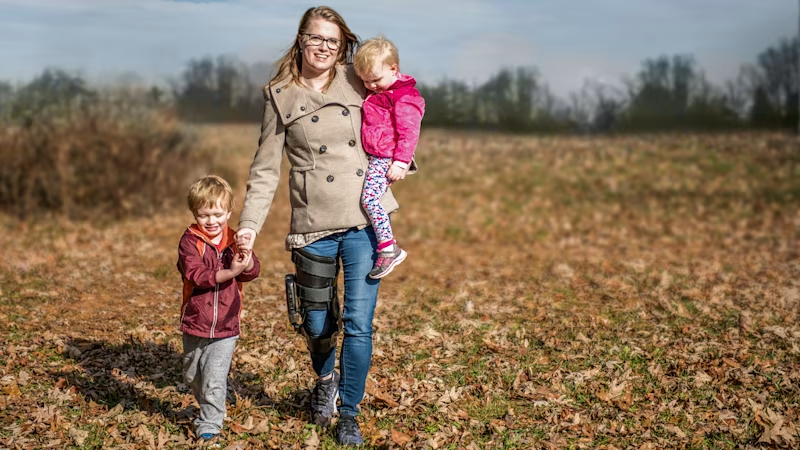Infantile cerebral palsy (ICP)
Cerebral palsy is a spastic disturbance of the nervous and muscular system that occurs in children. Spastic symptoms occur in 75 per cent of all cases.
Causes, symptoms and treatment
Cerebral palsy (ICP) is a typically spastic disturbance of the nervous and muscular system that occurs in children. It is characterised by disturbances of the nervous and muscular system in the areas of muscle tension (tonicity), muscle strength, coordination and movement sequences. Mixed forms of spasticity with generally elevated muscle tension are the most common.
Ottobock supports and orthoses

Causes
The possible causes for infantile cerebral palsy can vary widely. A lack of oxygen, umbilical cord complications, infections, cerebral haemorrhage and accidents can lead to infantile cerebral palsy throughout the course of pregnancy, but most commonly in the course of birth.
Multiple disabilities are seen in the majority of cases. The overall rate of occurrence is three out of 1,000 live births. However, premature infants are most frequently affected.
Symptoms
The symptoms of infantile cerebral palsy and their individual intensity can vary widely. Spastic symptoms occur in 75 per cent of all cases.
The long flexors and the adductors in particular are affected by paralysis with all forms. Spasticity also causes stiffening of the joints. In clinical terms, the condition of the individual joints can be described as follows: the hip is angled, flexed and turned inward. The elbow, wrist and knee joints tend to be stiff when flexing them. The forearm is flexed and the thumb is rotated inward. The ankle joint and foot are in the clubfoot position, and the spine is highly distorted as well.
Diagnosis and therapy
The diagnosis of ICP is based on clinical findings after other progressive causes such as tumours or inflammation have been excluded. Treatment focuses on multidisciplinary therapy encompassing various medical, orthopaedic and therapeutic approaches. Ottobock offers various suitable device solutions ranging from infancy to adulthood – for example, for positioning and support and to improve balance and the ability to walk (ankle-foot orthoses, walking aids, sitting and positioning aids).
Back to everyday activities: three steps to an Ottobock orthosis
- Here you’ll find an overview of all the orthoses and supports that could potentially help you. Take the list with you to your next doctor’s appointment.
- Talk to your doctor about which orthosis is best suited to your symptoms and condition. Your doctor can then write you a prescription for the appropriate orthosis.
- Take your prescription to a medical supply company. They’ll give you your new orthosis and adjust it to fit your exact body measurements.
